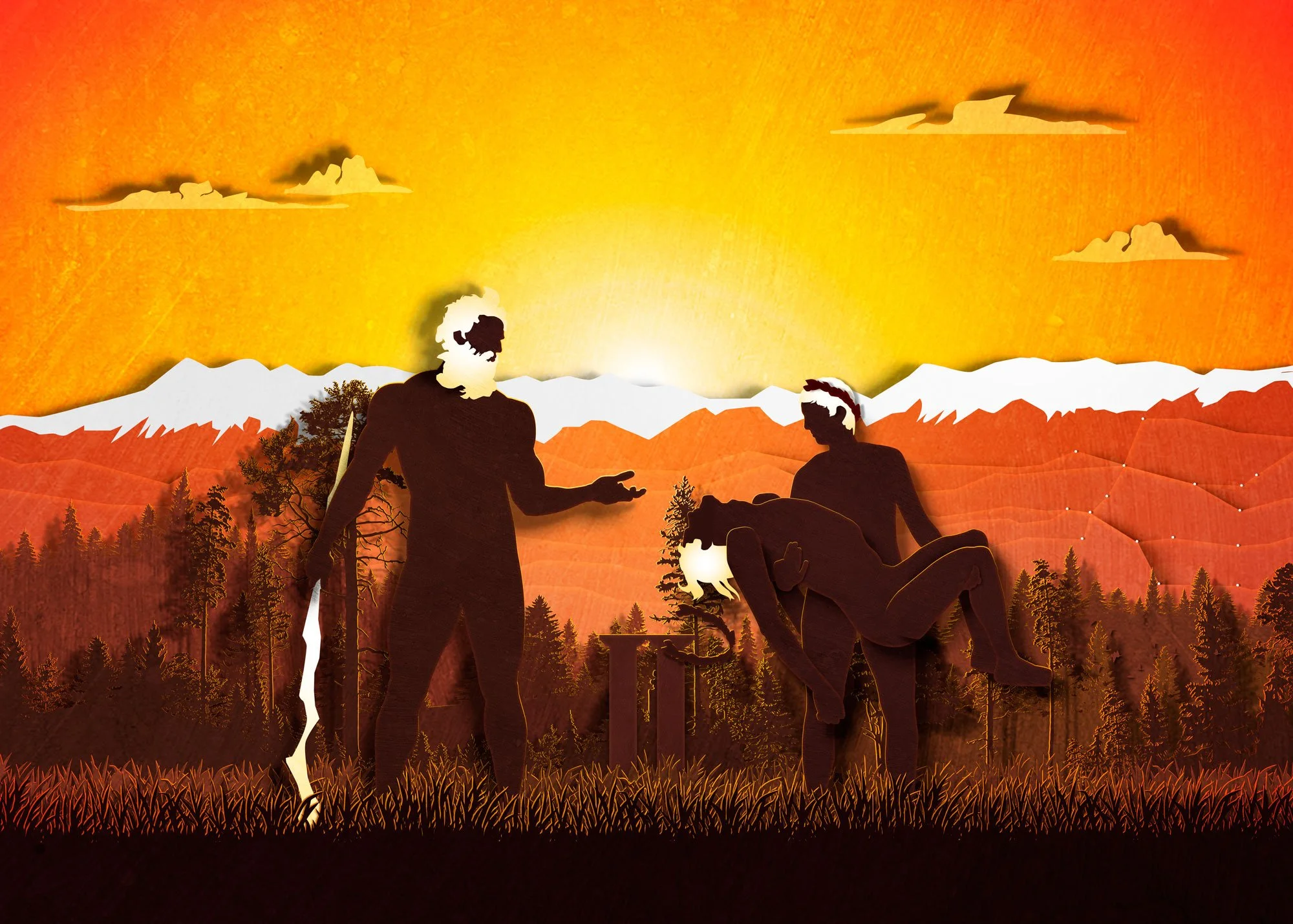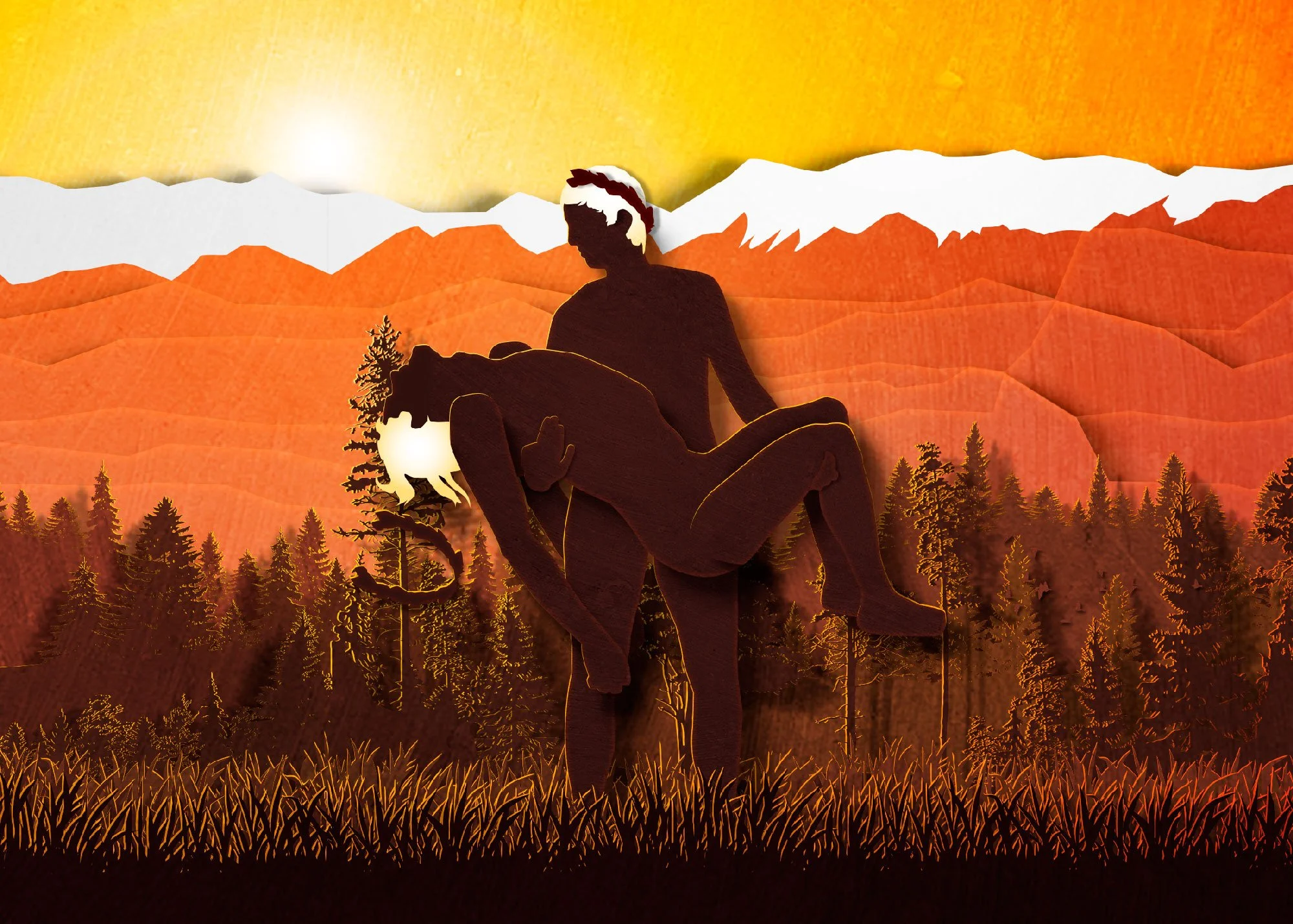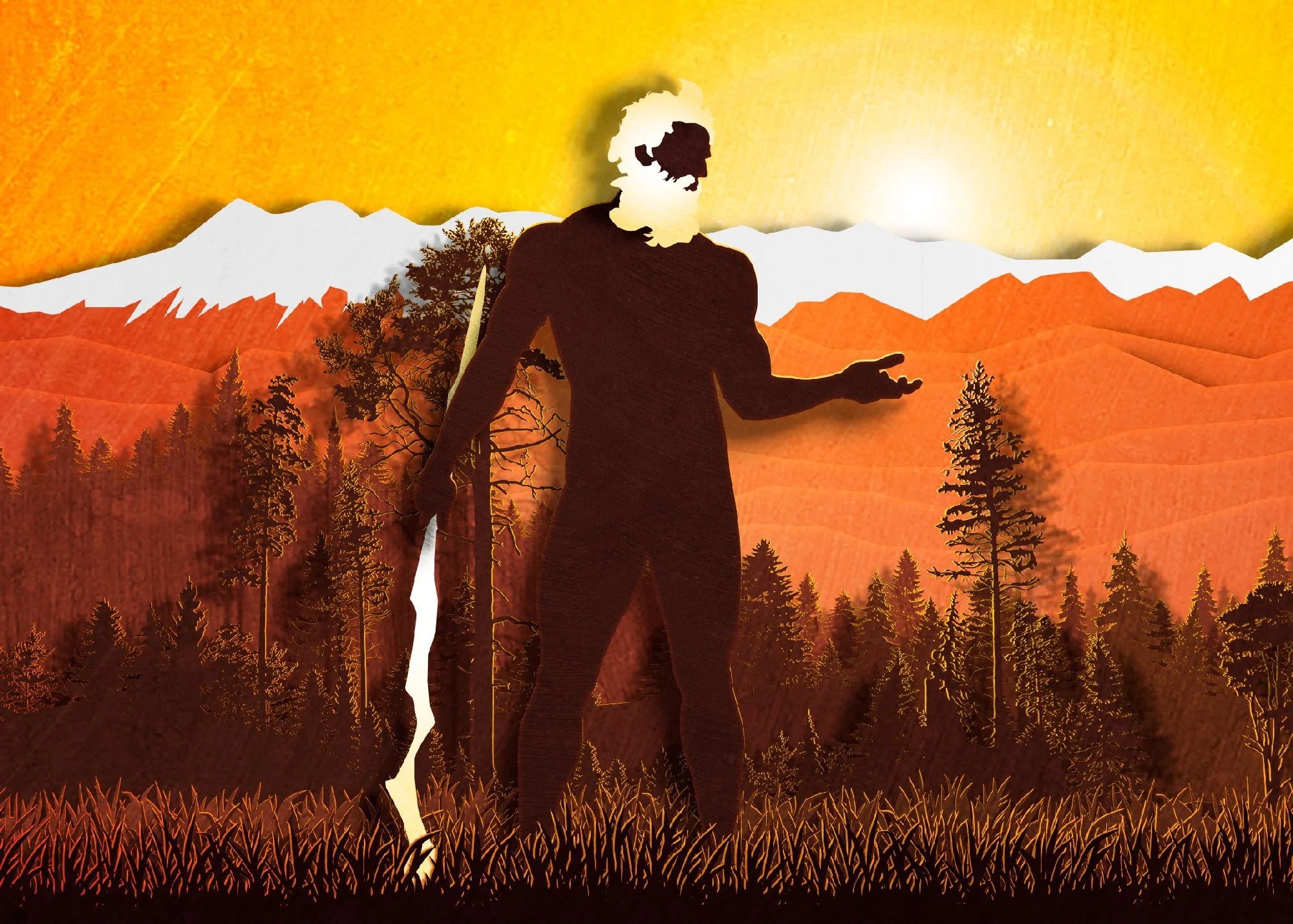Ancient Greek Mythology Tales of the Zodiac: The Story of Gemini
Table of Content
The Tale of Gemini

Gemini, represented by the symbol of The Twins, is the third Zodiac sign attributed to individuals born between May 21st and June 20th. In Greek mythology, The Twins, or The Dioscuri, were revered as symbols of loyalty, bravery, and brotherhood. The story of The Twins has inspired countless works of art and literature over the centuries, and their legacy continues to influence our culture today. From the popular twin characters in modern-day movies and TV shows to the astrological significance of the Gemini sign, The Twins remain a fascinating subject that sparks our imagination and curiosity.
The story was from different sources; Pindar - Nemean Odes, Apollodorus - Bibliotheca 3.11.2 and Hyginus - Fabulae.
The Last Adventure
The event took place shortly after the legendary quest of Jason and the Argonauts for the Golden Fleece. Castor and Pollux, known as The Dioscuri, and their cousins Idas and Lynceus ventured on a cattle raid in Arcadia. The daring raiders succeeded in their mission and celebrated their victory by dividing the cattle.
Idas, known for his mighty strength and often compared to the incredible Hercules, took charge of the situation and prepared a cow, cutting it into four equal pieces. He then proposed a wager to his fellow raiders, offering them the chance to win half of the cattle. The wager was simple - whoever finished their share of the meat first would receive half of the cattle, and the one who finished second would get the remainder.
Feeling confident and merry, the Dioscuri agreed to the challenge without hesitation. Little did they know that Idas had an insatiable appetite. As soon as they started eating, Idas began his feast with a massive bite and consumed half of his portion in one go. The Dioscuri, now in a rush to finish their share, started eating as quickly as possible. However, Idas had already finished his and his brother's share before they realised it. The Dioscuri were left stunned, feeling angry and betrayed.
The next day, the group split up. Idas and Lynceus took the cattle to Messene, while Castor and Pollux left empty-handed, heading towards Sparta, leaving the cousins with a bitter taste.
The Revenge
Idas and Lyncenus, two brothers known for their bravery and skill in battle, had promised to marry Phoebe and Hilaira, two sisters from a neighbouring village. The wedding was planned to take place months after a raid. As a sign of good faith, they had invited their cousins Castor and Pollux to the wedding.
However, they didn't know that Castor and Pollux were still angry about the raid and saw this as an opportunity for revenge. They arrived a day early and stole the cattle that Idas and Lyncenus had taken during the raid.
Later, on the wedding day, the Dioscuri arrived as planned and were welcomed by Idas and Lyncenus. Idas apologised for the disrespect they had shown and asked for forgiveness. The Dioscuri agreed to a truce, and the wedding preparations continued.
On the same day, Castor and Pollux met the brides-to-be Phoebe and Hilaira and fell in love with them. The four of them spent the day together, talking and laughing. Castor and Pollux were impressed by the sisters' beauty, intelligence, and kindness, and the sisters were charmed by their cousins' wit and courage.
However, things took a dramatic turn when, on the day of the wedding, while waiting for their brides, Idas and Lyncenus received news that Phoebe and Hilaira were missing and had been seen leaving with Castor and Pollux at night. Furious at the Dioscuri's actions, Idas and Lyncenus set out to find them and retrieve their brides-to-be and stolen cattle, determined to teach their cousins a lesson they would never forget.
Death of Castor
Castor and Pollux were happily married to Phoebe and Hilaira, respectively, and they had two children, Anogon and Mnesileus. One day, they received news that their cousins, Idas and Lyncenuse, were in the area and asked for their whereabouts. The Dioscuri knew that their cousins had a reputation for being fierce warriors and were always ready for a fight. Therefore, they set up an ambush, anticipating an attack.Lyncenuse, known for his sharp eyesight, spotted Castor hiding in a hollow oak tree from Mount Taygetus. He informed Idas of Castor's location, and Idas quickly moved to attack him. Idas crept closer to the tree with the might of Heracles and fatally wounded Castor with his spear.
Pollux heard his brother's cries and leapt out of hiding, chasing Idas and Lyncenuse deeper into the forest. When they reached a large twin column, Idas and Lyncenuse waited for Pollux to make his final stand. Idas hurled one of the columns at Pollux's chest, but he dodged it and drove his spear into Lyncenuse's ribs. Zeus then threw a fiery thunderbolt, killing Idas instantly.
After catching his breath, Pollux returned to Castor and found him still alive but struggling to breathe. Pollux held Castor in his arms and cried to his father, Zeus, for help.
"O father, son of Cronus, what end then shall there be of my sorrow! For me, also together with him ordain death, O monarch. Honour is departed from the man that is deprived of his friends, and in distress, few are there of mortals faithful enough to go shares in toil"
- Pindar, Nemean Odes 10.75
Zeus heard the cry of his son's pain and appeared before him and spoke:
"You are my son. But he engendered after you of mortal seed did her hero husband in approach to your mother beget. But come; of these things, I yet give you a choice. If, on the one hand, you are willing to escape death and hateful old age and to inhabit Olympus in company with Athena and with Ares of the spear black-with-blood, there is you indeed a rightful share of his. But if in your brother's behalf you contend, and are minded to share out an equal lot of all you have, then half your life you must breathe beneath the earth and half in the golden abodes of heaven."
- Pindar, Nemean Odes 10.75
The Birth of Gemini
Pollux immediately agreed to Zeus's offer, and as a result, Castor was granted eternal life as a constellation in the sky alongside his brother Pollux, who was already immortal. Together, they represent the Gemini constellation in the heavens and the underworld, serving as a testament to the enduring strength of brotherly love.
Bringing the Myth to Life Through Art
The artwork I’ve created depicts a deeply emotional moment from mythology: Pollux, engulfed in grief for his beloved brother, stands at a crossroads. As he struggles with his sorrow, his father offers him an extraordinary gift, the chance to become a constellation. This would immortalise him with his brother Castor in the night sky as Gemini. This powerful scene illustrates the profound themes of love and sacrifice, transforming a moment of mourning into one of eternal legacy.
Mount Taygetus

Mount Taygetus is one of the oldest recorded mountains in Europe, with a rich history and significance in Greek mythology. It is located on the Peloponnese peninsula in Southern Greece, towering over the cities of Sparti and Kalamata. The mountain range spans across the residences of Arcadia, Laconia, and Messenia, and its highest peak stands at an impressive 2,404m (7,887ft), dominating the skyline.
The mountain's name and mythology are intertwined with the mountain-nymph Taygete. According to Greek mythology, Taygete was one of the seven daughters of Atlas and Pleione and was known for her grace and agility. She was often associated with the constellation of Taurus.
There are three stories in Greek mythology about Taygete and her association with Mount Taygetus. One tragic tale tells of Zeus deflowering Taygete against her will. Overcome by grief, Taygete ended her life by hanging herself at the summit of the mountain Amyclaeus, which was then renamed Taygetus in her honour. - Pseudo-Plutarch, Names of Rivers and Mountains
Another story portrays Taygete as a skilled hunter and archer and the mistress of the animals to Artemis. She used Mount Taygetus as her haunt and was said to have given the Hind of the golden horns, which she guarded, to the Goddess Artemis as a sacred gift in exchange for saving her from the pursuit of Zeus. Some argue that Artemis transformed Taygete into a cow to save her.
The third story is about Zeus pursuing Taygete, who, turning herself into a doe, fled into the forest to escape his advances. Zeus was not deterred and eventually caught up to her, transforming himself into a stag. The two animals then mated, and Taygete gave birth to a son, Lacedaemon. Others believe that she was the Hind of the Golden Horns that Hercules killed in one of his labours.
Despite her legendary status, little else is known about Taygete. Her story serves as a reminder of the power and beauty of nature and the importance of respecting and protecting it. Mount Taygetus, with its rich history and breathtaking views, continues to be a popular destination for tourists and hikers alike.
The Dioscuri - Stripings of Zeus

Castor and Pollux, the Dioscuri, were half-brothers born to Leda, whom Zeus seduced as a swan, and Tyndareus, the King of Sparta. Castor was a skilled horseman, and Pollux was an accomplished boxer. They were inseparable and became famous as Gemini The Twins due to their affectionate bond.
The Dioscuri embarked on various exciting expeditions, such as the Voyage of the Argonauts for the Golden Fleece and the Calydonian Boar Hunt. Additionally, they laid siege to Athens in response to Theseus' abduction of their sister Helen, who triggered the Trojan War.
The sailors revered them as protectors who would rescue them during storms by manifesting as St. Elmo's Fire and leading them to safety. They were worshipped in Greece, Rome, and other parts of the ancient world as horsemanship, boxing, and navigation deities. They were also believed to have the power to cure diseases and grant fertility.
The Birth of Castor and Pollux
According to Apollodorus' Bibliotheca 3.10.7, the twins Pollux (Polydeuces) and Helen had an extraordinary birth. Their father, the mighty god Zeus, disguised himself as a swan and mated with their mother, Leda, an Aetolian princess. On the same night, Leda also had sexual intercourse with her husband, Tyndareus, King of Sparta. As a result, two sets of twins were born: Pollux and Helen from Zeus's egg and Castor and Clytemnestra as natural-born children of Tyndareus and Leda.Pollux was not just any ordinary person. He was a highly skilled boxer famous for his prowess in the sport. Interestingly, he was also rewarded for his boxing skills. During his travels with the Argonauts, Pollux was challenged by King Amycus to a boxing match in the land of Bebryces. Despite being a formidable opponent, Pollux emerged victorious with a single elbow blow.
Castor, on the other hand, had a different set of talents. He was an expert horseman and a skilled warrior. Castor was known for his exceptional horsemanship and ability to tame wild horses. He went on many adventures with his brother and fought bravely in battles, earning a reputation as a fierce warrior.
Zeus - The Father of Gods and Men

Zeus, the Greek god of the sky and thunder, is one of the most prominent figures in Greek mythology. He was the youngest of the six children of Cronus and Rhea, born in a cave on the island of Crete. To protect Zeus from his father Cronus, who was known for swallowing his children, Rhea entrusted him to her loyal servants, the Curetes and the nymphs Adrastea and Ida. They raised Zeus in secret, and he was fed the milk of Amalthea, also known as the Horn of Plenty, which provided endless nourishment.
Rhea groomed Zeus to become the next King of the gods and overthrow Cronus' reign. When Zeus became an adult, he sought the help of Metis, the daughter of Ocean, to free his siblings from Cronus' stomach. Together, they tricked Cronus into regurgitating his swallowed children. With the help of his siblings, Zeus started a ten-year war known as the Titanomachy, which pitted the Titans against the Olympians, the gods led by Zeus. After a fierce battle, the Titans were defeated, and Zeus emerged as the new ruler of the gods.
Leda and the Swan
Greek mythology has different versions of the story of Leda and the Swan. The most commonly known version is the one in which Zeus, the King of the gods, took on the form of a swan and mated with Leda, the wife of King Tyndareus. This encounter resulted in the birth of two children, Pollux and Helen.
However, there are variations in the story as told by different sources. According to Hyginus, Fabulae, Zeus transformed into a swan and engaged sexually with Leda near the Eurotas River. On the other hand, Hyginus, Astronomica, tells the story of Zeus pursuing Nemesis, the goddess of retribution, to sleep with him. Zeus could not persuade her, so he transformed into a swan as if flying from an eagle, Aphrodite in disguise. Nemesis held the swan in her arms until she fell asleep, and Zeus seized the opportunity to rape her.
Like a bird, Nemesis laid an egg, which Hermes took away and threw in Leda's lap. From it, Helen, who was said to be the most beautiful woman in the world, was born. Leda raised her as her daughter. In yet another version, told by Pseudo-Apollodorus, Nemesis transformed into a goose to avoid being embraced by Zeus. Zeus then appeared like a swan, and Nemesis laid an egg that a shepherd found and gave to Leda. Helen hatched from the egg and was raised as Leda's daughter.
These different versions of the myth have been passed down through the ages, and while the details may vary, the story of Leda and the Swan remains one of the most intriguing and mysterious tales in Greek mythology.
Resources: Hyginus Fabulae 77, Hyginus, Astronomica 2.81, and Apollodorus 3.10.7
Constellation Gemini

Throughout history, there have been many stories of brotherly love and devotion. One such story is that of Castor and Pollux, who were believed to be the most affectionate brothers of all time. These two stars in the sky never competed for power or made a move without consulting each other. Their loyalty and devotion to each other were so great that Zeus, the King of the gods, decided to reward them by placing them in the sky as famous stars. Also, Poseidon, the god of the sea, gifted them horses to help stranded sailors.
However, there are other stories about the origin of these stars. Some people believe that they represent Hercules and Apollo, or Triptolemus and Iasion, who were loved by Demeter and carried to the stars. Despite the differences in these stories, the common theme is the love and devotion of brothers.
Furthermore, there are also stories of Castor's death. One story tells of his demise during a battle with the Lacedemonians, while another claims that he died while defending Sparta against Lynceus and Idas. Interestingly, Homer wrote that Pollux granted his brother half of his life to alternate shining in the sky. These stories have been passed down through the ages and continue to inspire people today. - Hyginus, Astronomica 2.22.1
The Meaning of The Gemini Zodiac Symbol
The glyph is a symbolic representation of duality, specifically The Twins or the Roman numeral II. It is a complex symbol, divided into four pillars, each representing a unique desire or aspect of life. These pillars are interconnected and must work together for the glyph to remain upright and balanced. This balance is essential to the glyph's meaning, as it illustrates that one cannot exist without the other. The Dioscuri, or The Twins, are often associated with this symbol because they embody the concept of duality and balance. The glyph serves as a reminder of the interconnectedness of all things and the importance of finding harmony between seemingly opposing forces.
SHARE YOUR THOUGHTS ON
Ancient Greek Mythology - The Third Sign of the Zodiac - The Story of Gemini
Sharing is Caring
